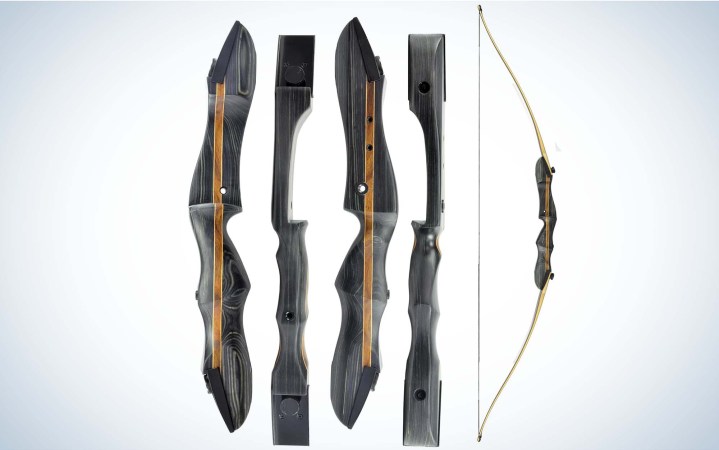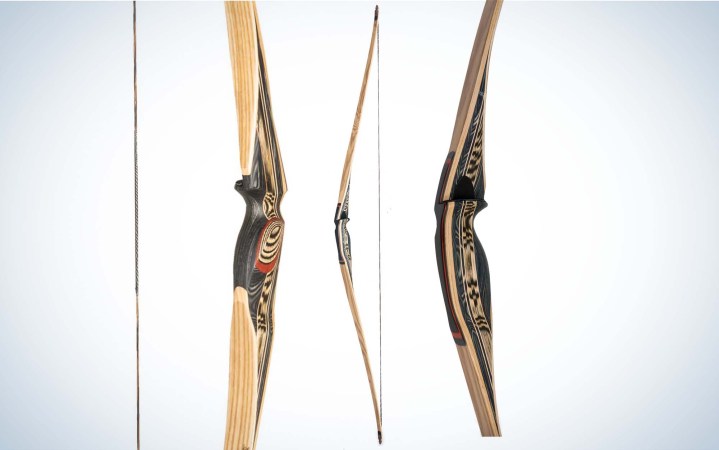We may earn revenue from the products available on this page and participate in affiliate programs. Learn More ›
When I was 14, I made a red oak board bow in my parent’s garage. The bow cost about $10 to make, and it had jarring handshock. Even though that cheap bow wasn’t a great shooter, it got me in the door and I wouldn’t have been able to learn the basics or take my first steps in archery hunting without it. I’ve since made better selfbows and owned many of the best custom bows. But this summer I’ve returned to my humble roots to test three budget trad bows, all under $330.
Two of them cost under $200 and are readily available on Amazon. The third is a fancier budget longbow and, of course, my favorite of the group. All three proved to be nice shooters and absolutely capable of killing game ethically. Here’s what I found from testing these budget trad bows and comparing them to my custom Wengerd Ibex which cost north of $1,800.
Trad Bows Tested
Tachyon Recurve ($130)
Southwest Archery Ghost Longbow ($175)
Old Mountain Mesa Longbow ($330)
Wengerd Ibex ($1,875)
Accuracy
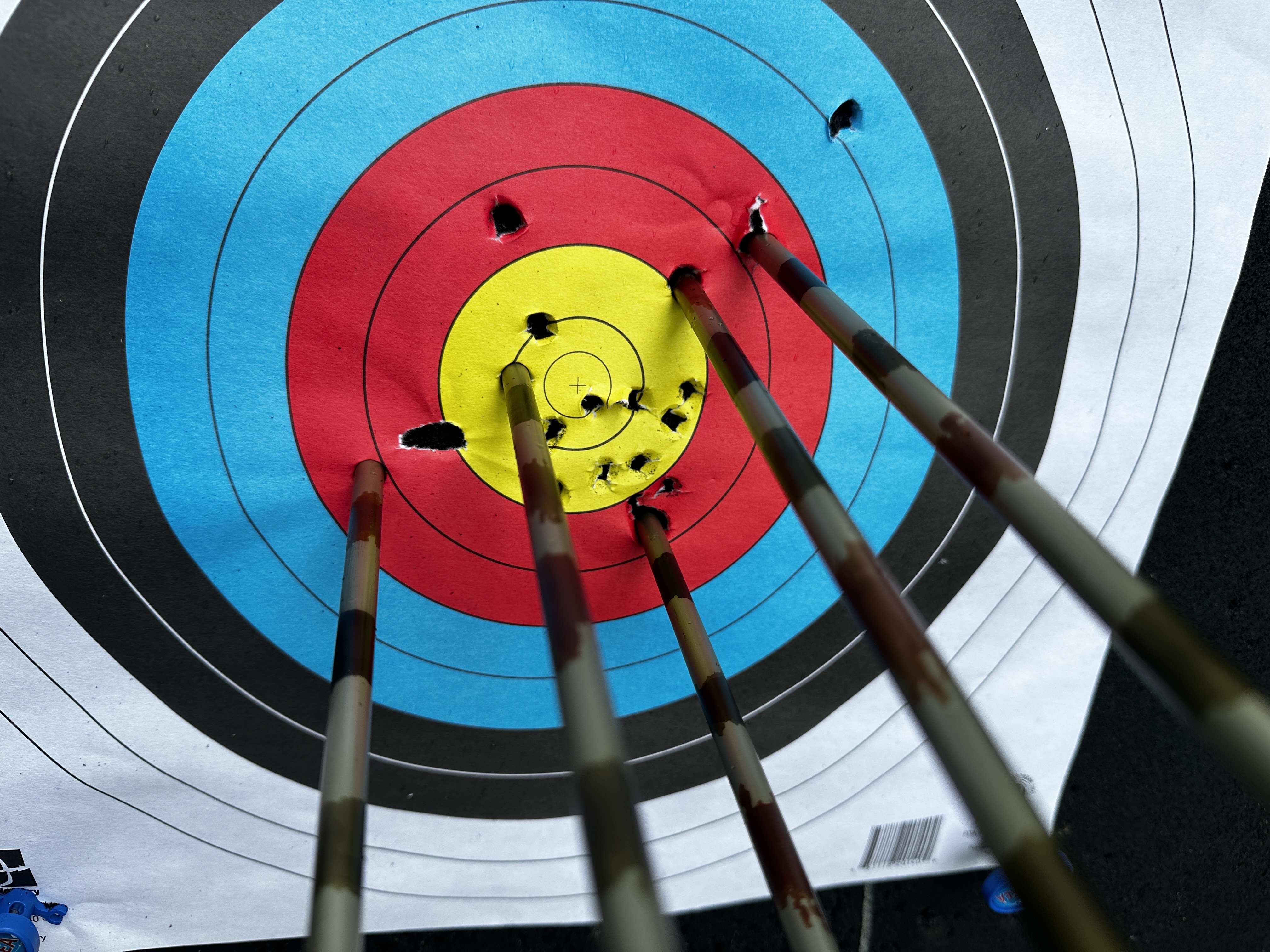
Photo by Scott Einsmann
It’s no secret that a bow’s accuracy depends on the archer. Bows are generally repeatable machines that will shoot tiny groups if we don’t get in their way. But, after shooting, hunting, and competing with traditional bows for 20 years, I’ve noticed that some bow and arrow combinations punish bad shots less. Archers typically call that quality forgiveness.
For example, as part of my practice routine, I grade my shots on 1 to 10 scale based on how well I executed my shot process. Typically a 7 or better will hit within 4 inches of my aiming point. On some bows a 5 or 6 will hit 8 or more inches from my aiming point, and others, it will land within 6 inches.
This is important because under a stressful situation, like when you’re at full draw on a big buck, you’re more likely to collapse or pluck your release. It’s human nature. So a little forgiveness is helpful when pressure comprises your form.
To get an idea of each bow’s forgiveness, I shot four, five-shot groups, at 20 yards. If I had a really bad shot like a collapse or severe pluck, I reshot that arrow, but anything I considered a 5 or better counted for score. Here are the results:
As you can see in the chart above, all the bows can hold a deer-killing group at 20 yards as long as I execute a halfway-decent shot. The mass and design of my Ibex help it to be more consistent than the budget recurves. But the margin wasn’t as wide as I suspected. The light Mountain Mesa was surprisingly accurate and if not for a few bad shots, it would have been an even closer race.
The Mountain Mesa was the most consistent budget bow across the 20 shots. One downside of this bow is that it’s easy to push shots left or right due to its low-mass weight. If I were going to hunt with the Mountain Mesa, I’d put a bow quiver on it to weigh it down.
The Tachyon and the Ghost were what I’d considered an “honest shooting bow.” If I lost my focus, they let me know about it with an errant shot. They didn’t give me much help for a mediocre execution, but my good shots stacked together.
Speed
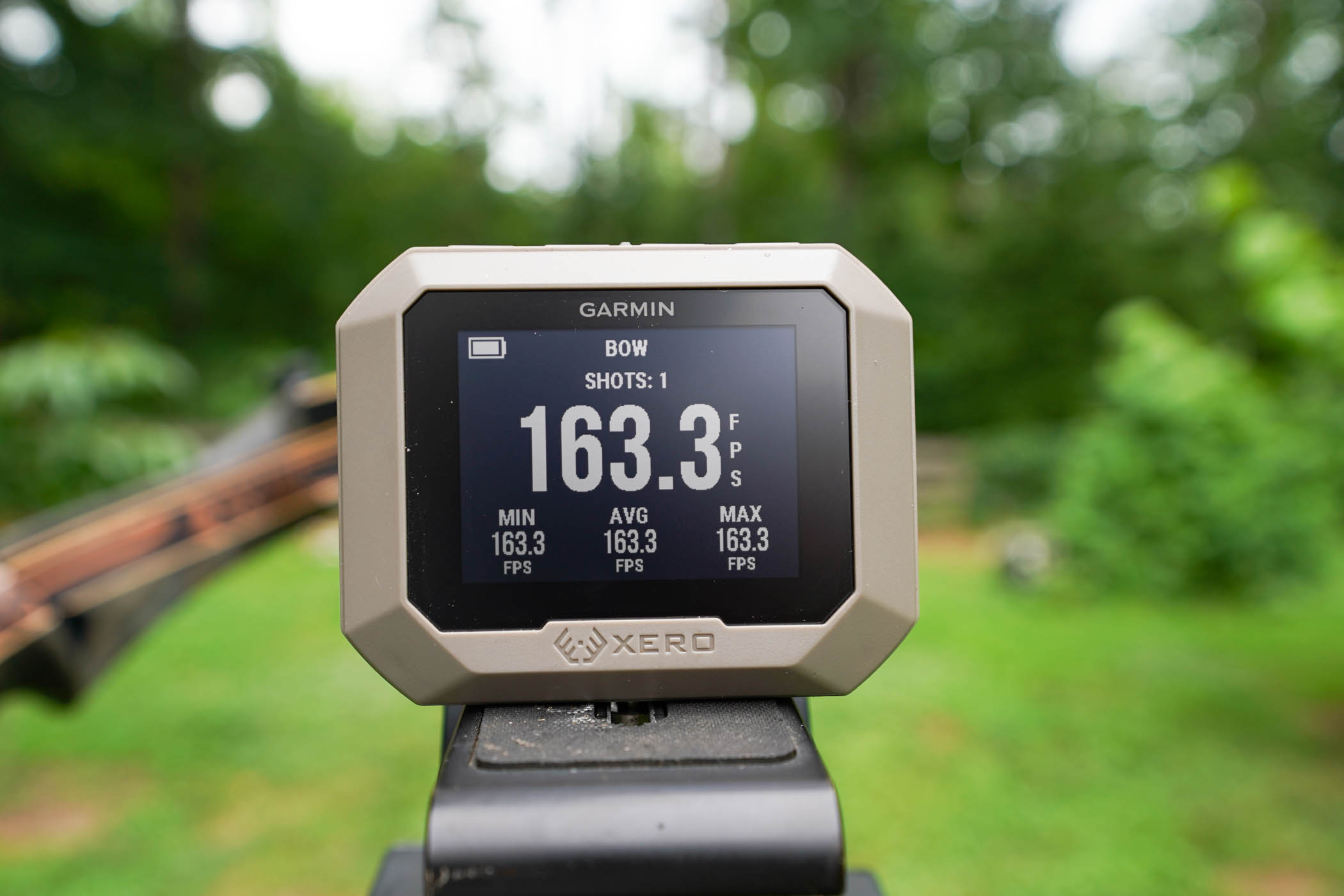
Photo by Scott Einsman
Speed is a bit overrated, but it is a measurement of a bow’s efficiency. I typically hunt whitetails with bows in the low 40-pound range, so I like a bow that generates a lot of energy per pound of pull weight. Here’s what I got for speed with these budget trad bows.
| Bow | Speed | Draw Weight at 31 inches | Momentum |
| Southwest Archery Ghost Longbow | 151 fps | 39 pounds | 0.327 lbs-sec |
| Old Mountain Mesa Longbow | 152 fps | 39 pounds | 0.329 lbs-sec |
| Tachyon Recurve | 168 fps | 43 pounds | 0.366 lbs-sec |
| Wengerd Ibex | 176 fps | 43 pounds | 0.381 lbs-sec |
The speeds were measured with a Garmin Xero C1 while shooting a tuned 488-grain arrow. I shot three times and averaged the speed. Each bow, except the Wengered, was marked 35 pounds at 28 inches. I draw 31 inches and you’ll see the draw weight of each bow at my draw length in the chart above.
Now that the technical nitty gritty is out of the way, let’s dissect the numbers. The custom bow is the fastest by a good margin. Even if the longbows were of equal draw weight I don’t think they’d surpass 170 fps, more likely they’d be in the low 160s. The Tachyon held its own at only 12 fps slower than the Ibex. This is impressive when you consider it’s the least expensive bow tested.
What does that mean for hunting? I used the Ibex to shoot my biggest buck. I used a four blade Magnus Black Hornet and the shot was about 20 yards. I split a rib and had a complete pass through. So with that data point I can say that the Tachyon at the draw weight above could pass through a deer with an arrow of an appropriate weight and a quality broadhead. With the longbows on the other hand, I’d be more comfortable hunting with them at draw weights above 45 pounds.
Read Next: Best Recurve Bows
Shooting Experience
| Bow | Shooting Experience |
| Wengerd Ibex | 5 |
| Old Mountain Mesa | 4 |
| Tachyon Recurve | 3 |
| Southwest Archery Ghost | 3 |
I graded each bow’s shooting experience on a 1 to 5 scale. A 5 is a bow that’s smooth, quiet, vibration free, and stable at full draw. A score of 1 is the board bow I made in my parent’s garage. A 3 is a bow that’s good, but has some flaws.
These cheap bows didn’t score as high as my Ibex. While the Ibex has a lot of early draw weight, it’s very smooth in the last 3 inches of the draw. It holds steady because of its G10 riser and because the bowyer placed hidden tungsten weights in the bottom of the riser to balance it. Custom bows typically have better materials like bamboo cores, carbon layers, and G10 risers. Plus, they are expertly tillered. All those factors result in a superior shooting experience.
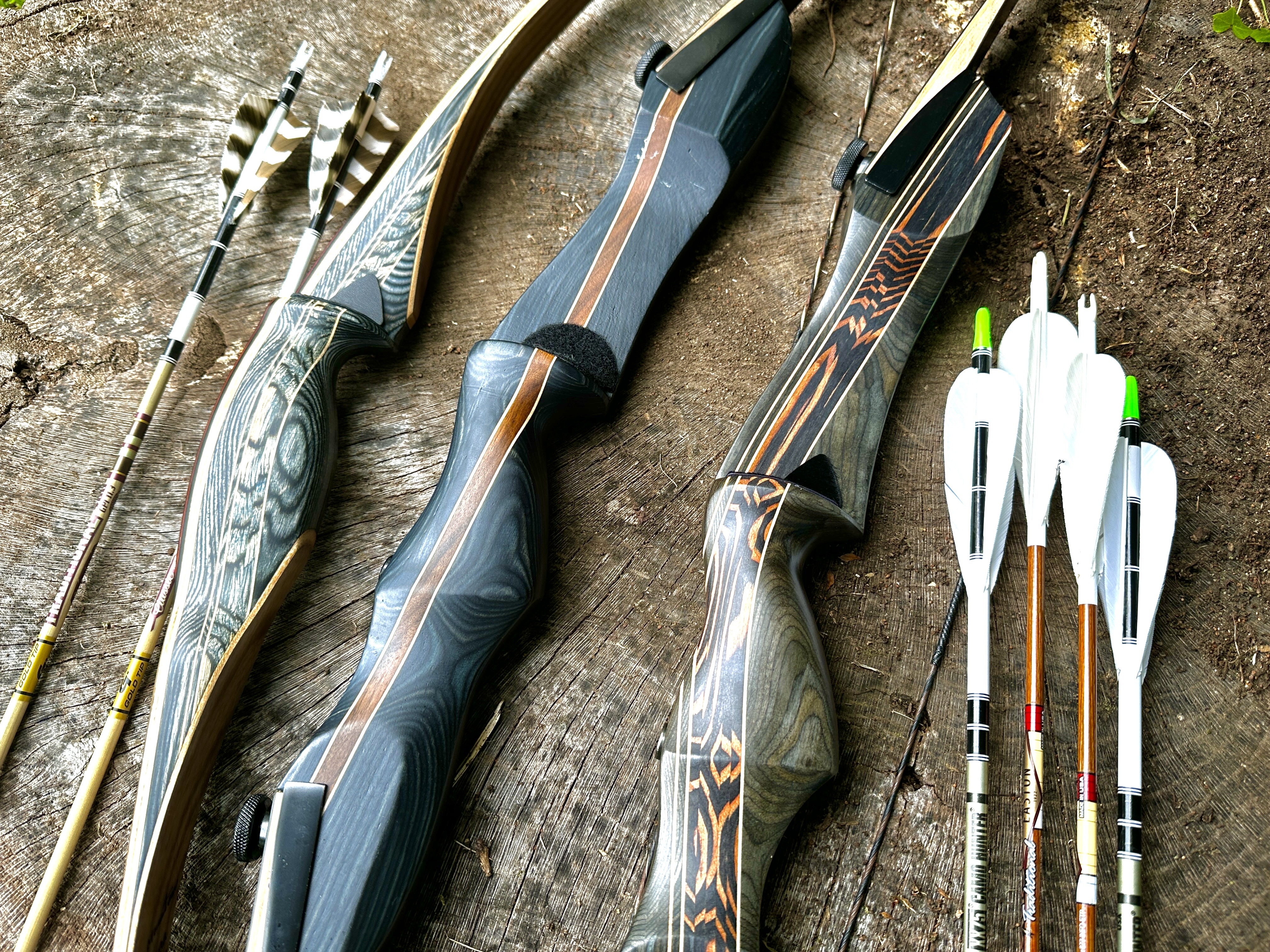
Photo by Scott Einsmann
Yet, shooting these cheap bows wasn’t bad. In fact the Southwest Ghost didn’t need string silencers to be quiet enough for hunting and it had very little handshock. The Tachyon was also pleasant to shoot with heavy hunting arrows and it only needed a pair of cat whiskers to quiet it down.
The Mountain Mesa had the least vibration and felt the most stable at full draw. The Ghost and Tachyon have a residual buzz, but it’s nothing like my first selfbow or anything approaching a Hill-style longbow.
The draw is where I noticed the most difference between the three bows. The Ghost starts off easy and it has noticeable stack as it gets to my long draw length. However if you’re around a 28-inch draw, it’ll likely be very smooth. The Tachyon is smoother than the Ghost, but at full draw it’s like you’re pulling up against the wall of a compound. The Mountain Mesa has an excellent draw cycle for a longbow and it felt comparable to custom longbows I’ve owned in the past.
The Upshot on Budget Trad Bows
Is my Ibex better than a $120 recurve? Yes, definitely yes. That’s like asking if a $100 Vortex Triumph binocular is better than a $1,700 Zeiss SFL. It’s not a fair fight. The real question is, how much better?
Custom bows offer more than just performance benefits. You get to work with a craftsmen on choosing a bow’s length, woods, limb materials, and a specified draw weight at your draw length. The hand-made aspect and the materials is why custom bows cost more.
But I wouldn’t recommend anyone buy a custom bow if they’re just getting started or if they don’t care about any of the above benefits. These readily available budget trad bows are plenty accurate to take hunting. I’d be completely comfortable taking the Tachyon or the Mountain Mesa in the woods this fall. In fact, I plan to hunt with the Tachyon. So if you want to try traditional archery, these bows are an ideal gateway. As long as you embrace the steep learning curve of learning to shoot and tune a trad bow, you can be successful with an inexpensive recurve.

